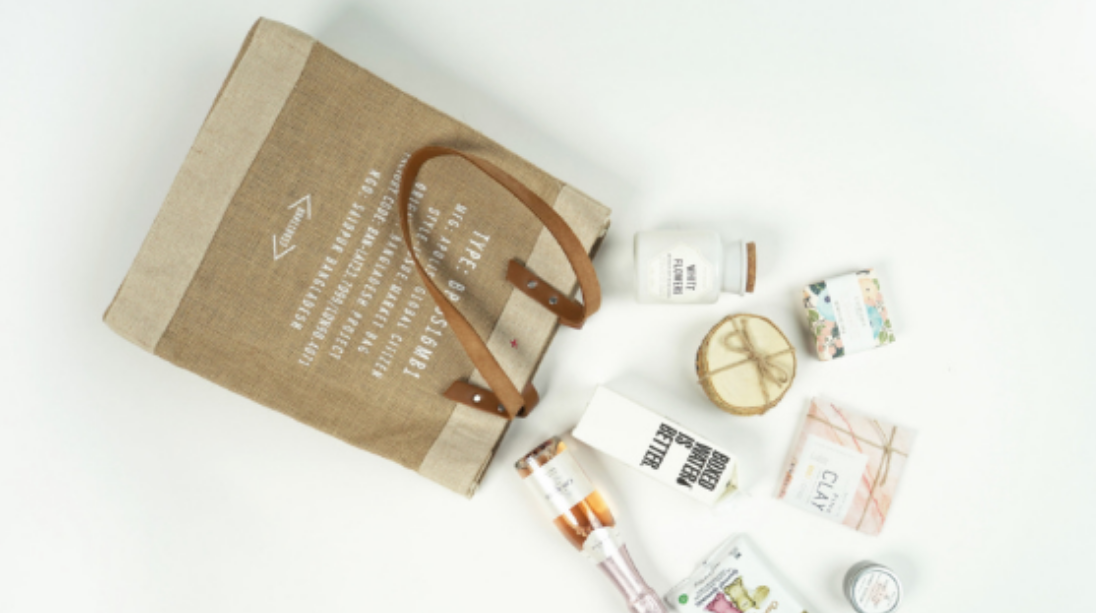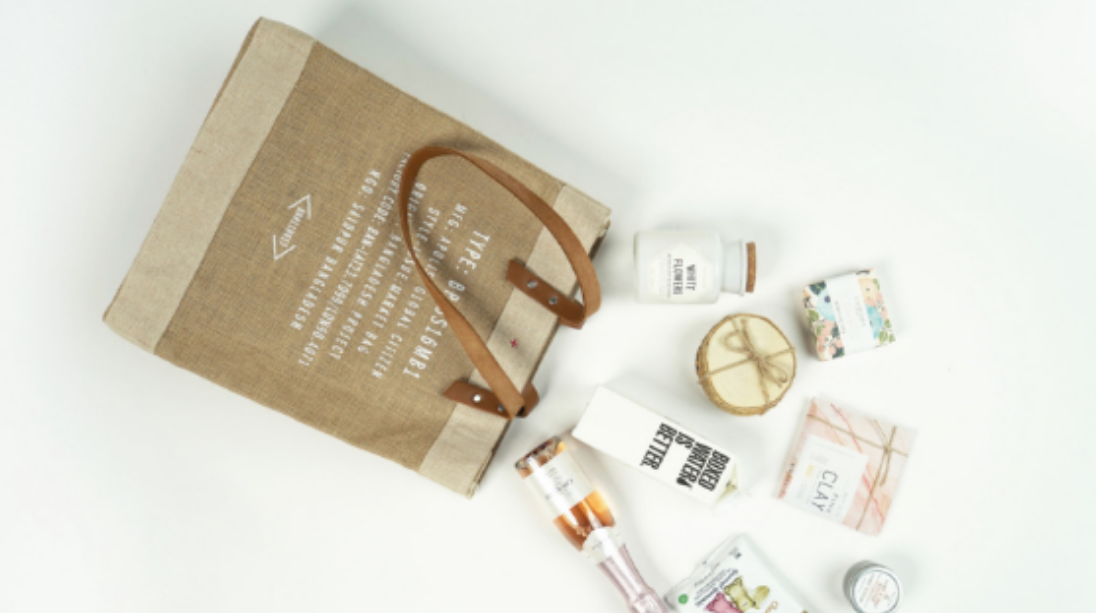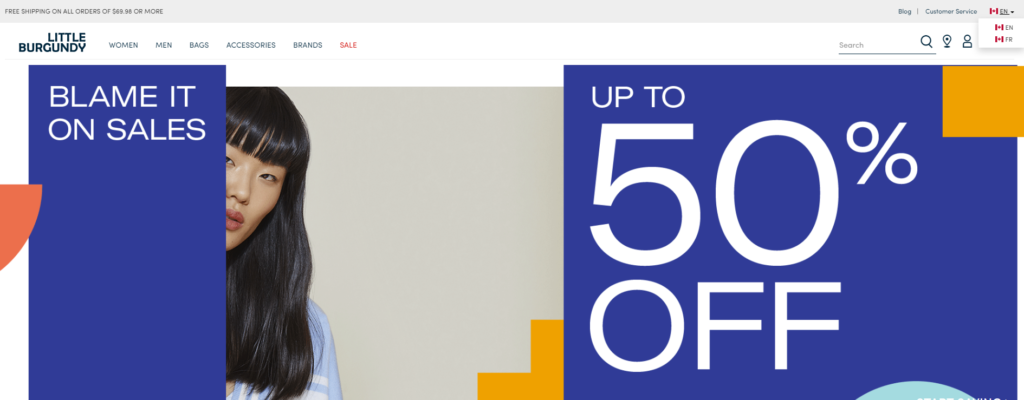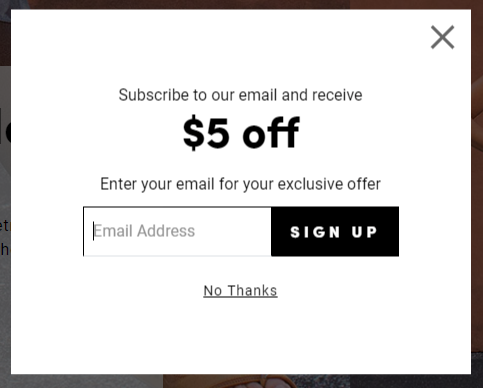

A personalized eCommerce customer experience adds significant value for both customers and your bottom line. A study by Segment found that 44% of customers are more likely to become repeat customers if they have a personalized experience.
And according to Deloitte, 36% of consumers express interest in purchasing personalized products or services, with 48% saying they would be willing to wait longer in order to receive it.
There are several different ways to personalize the eCommerce customer experience, but it all starts with a good user experience.
Building a Solid Customer Experience
Your customer won't care that you sent them a coupon on their birthday if your product pages take two minutes to load. Focus on creating a solid user experience on your site before you worry about personalization. At a bare minimum, your site needs to check the following boxes:
- Site Speed- Customers have little to no tolerance for slow-loading sites. According to Google, your site has 3 seconds to load before you lose just over half of customers. There are several ways to optimize your site speed—some tactics are as simple as changing the format of your images—but there are a lot of factors that affect site speed, like your CDN provider and site hosting. Schedule a free site audit with Virid and we will provide you with a complete report of insights to help you optimize your site.
- Accessibility- Follow WCAG and ADA guidelines to make your site accessible for all customers to shop. Not sure if your site is compliant? Our free site audit also reviews site accessibility.
- Product Pages- Product pages should be written concisely and use high-quality images. Stick to 3-5 bullet points highlighting the most unique and relevant features of the product, and include photos of all the different ways the product can be used or worn.
- Site Navigation- Site navigation should lead customers quickly to their end destination in as few clicks as possible. Adding site search and a site map to your online store can also help customers get to their end destination quickly. If they still can't find what they need, make sure a customer service phone number is displayed prominently on your site.
- Return Policy- Your return policy should have its own page on your site and be easy to find (directly linked in either the navigation or in the site map). It should be written clearly in simple terms, and it should also outline shipping options, how many days someone can take to make a return, and include exceptions like a customer ordering an item online and returning it to the store. For more best practices on writing your return policy, check out our article Returns: The Big Picture.
- Checkout- No matter what personalization efforts you decide to employ, you need to be sure those efforts are not adding friction to the checkout process. Allow customers to checkout as guests and limit the amount of information they need to provide at checkout. This final stage is where you can lose a large percentage of your potential customers if you slow down their experience. Allow multiple payment options, offer free shipping if it makes sense, and don't get in their way. If you want to collect additional customer information like a birthday or style preferences, do that on the order confirmation screen, in a pop-up on the site, or in the follow-up order confirmation email.
- Mobile- It is indisputable that customers expect mobile-responsive pages; sites that work just as seamlessly on their phones as they do on desktop. Make sure your site passes the thumb zone test and that users can still access product reviews, quick shop, and other basic site features on mobile.
Relevant Content
Delivering relevant, high quality content to customers is often overlooked as a form of personalization. The fact is, the basis of personalization is providing a unique, relevant experience to each customer that interacts with your site. Using cookies to target specific segments of site visitors allows you to show them personalized content. Use high quality product images, and include lifestyle photos to allow customers to envision a product in their own lives. Create personalized content like style guides based on previous purchases or what is already in their cart. Display recently viewed items to capture customers who previously visited your site.
Additionally, offering Shop by Store or even allowing customers to narrow down their browsing by the country they are located in, delivers the most relevant content to them based on location. Further personalize their experience by allowing them to view the site in different languages.
 Canadian-based retailer Little Burgundy allows customers to browse in English or French.
Canadian-based retailer Little Burgundy allows customers to browse in English or French.
Product Recommendations
Product recommendations can be driven by past purchases, browsing behavior, demographics like age, ethnicity, location, and psychographics like interests, attitudes, and habits. One of the most effective ways to increase average order value is to make product recommendations based on what's in the customer's cart already. When you browse in a physical store, you may walk in looking for a specific item, but something else will catch your eye and you will end up purchasing additional items you didn't plan on buying (Target run anyone?) According to Segment, 40% of US consumers purchased something more expensive because their experience was personalized. 49% of shoppers purchased a product they didn't intend on buying after receiving a personalized recommendation. Upselling and cross-selling techniques enable product discovery without the option of physically browsing a store.
You can also recommend products based on seasonality (rain boots on the East Coast in April or thick socks during the winter) or suggest items a customer may like using a callout such as 'Customers also purchased....' The more personalized the recommendation, the more likely the customer is to add the item to their cart.
 An example of personalized product recommendations on Journeys.com
An example of personalized product recommendations on Journeys.com
A/B Testing and User Testing
A/B testing involves trying out 2 different versions of your site to see which one performs better. The differences between the two can be as simple as a different placement of the 'Add to Cart' buttons, or could involve showing two completely different homepages to different consumers based on their segment. The secret to optimizing your site's conversion rate is to test everything.
User testing such as using heat maps for tracking how customers interact with your site can tell you what changes to make. Sometimes something as simple as changing the color of a button or moving the cart logo on your site can have a dramatic impact on your bottom line.
Holidays and Birthdays
On a customer's birthday, sending a personalized email with a discount code is a great way to encourage a purchase. Birthdays are also a great time to use direct mail—sending a handwritten note with a coupon or promo code is a personal touch that a customer is far more likely to hold on to, and it further strengthens their relationship with the brand.
Capture Customers Before they Leave
When a customer shows signs of leaving your site, it's called exit intent. Google Tag Manager provides a solution to track exit intent and allows you to display pop-ups that could keep visitors on your site. A discount for signing up for a newsletter that appears in a pop-up when a customer is about to leave your site can increase conversions. Capturing feedback on why a customer may want to leave your site ('Didn't find what you were looking for? Talk to a Customer Service Agent through our live chat system') is also an effective way to help customers find what they need and keep them on your site.

Win Back Customers
Despite your best efforts, some customers will still decide to leave your site without making a purchase. Win back those customers with abandoned cart emails, retargeting ads, or even by sending a discount through email or direct mail. Customers leave for a variety of reasons; if they're not converting, your prices could be too high for them and they could be waiting for a sale or discount, checkout could have been too tedious or slow, or customers may simply get distracted and move on to something else. Optimizing your site and your checkout process in particular will help reduce your exit rate, and focusing on winning back lost customers with personalized content will help boost your sales.
Gathering Customer Data
As a final note, most retailers assume personalization requires aggressively collecting customer information. And yes, you need customer data to accurately personalize the customer experience. However, customers want personalized experiences that make them feel seen and understood, not stalked. Be aware of how often you are requesting consumer information and how much you are asking for. When gathering any type of data, let customers know why you need it and the context in which it will be used. This will increase the likelihood that they will provide the information and help you optimize their customer experience.
Personalizing the eCommerce customer experience is crucial to growing your business. Schedule a free site audit with Virid, and we'll give you a report full of insights to help you optimize your site for growth.
[sf_modal header="First, tell us a bit about yourself:" link_type="button" link_text="Modal link" btn_colour="accent" btn_type="standard" btn_size="large" btn_icon="ss-star" btn_text="Schedule My Free Site Audit"]
[/sf_modal]
For more content like this, sign up for our bi-weekly eCommerce newsletter!

